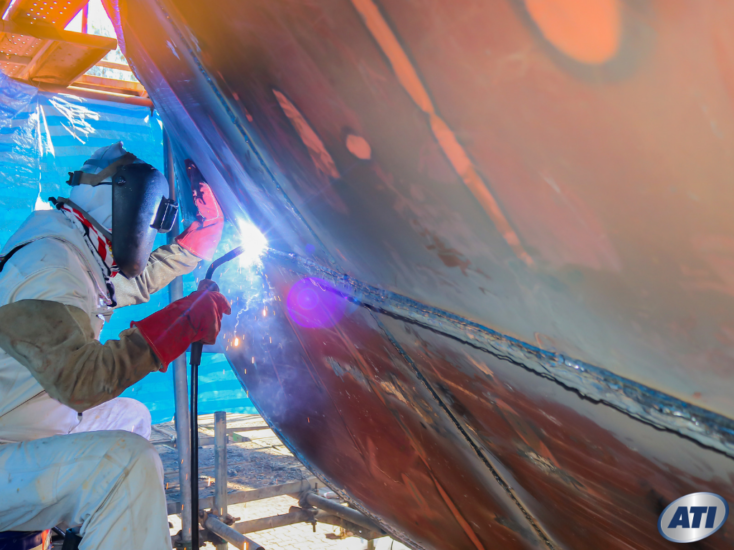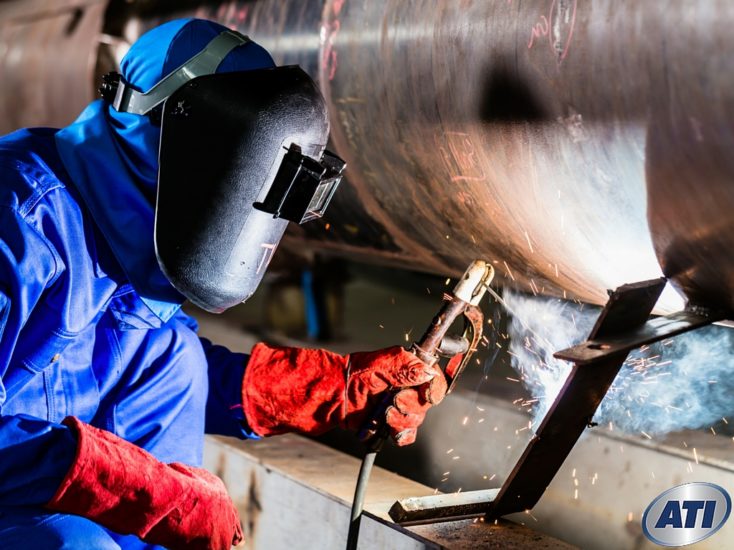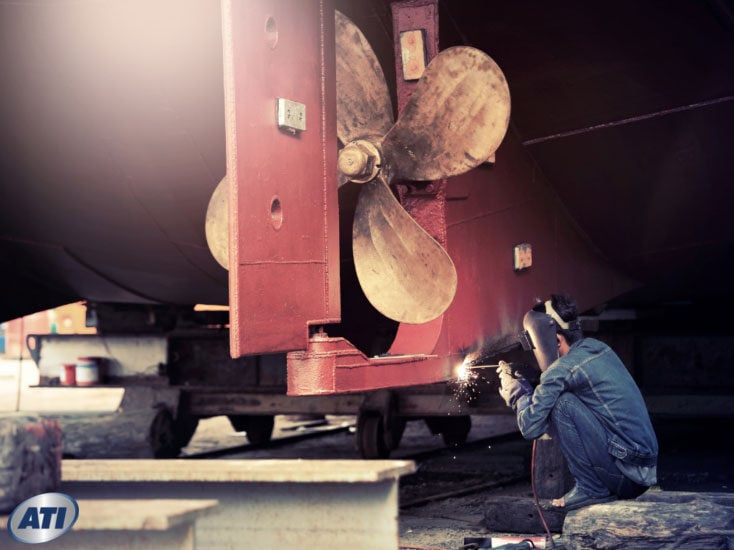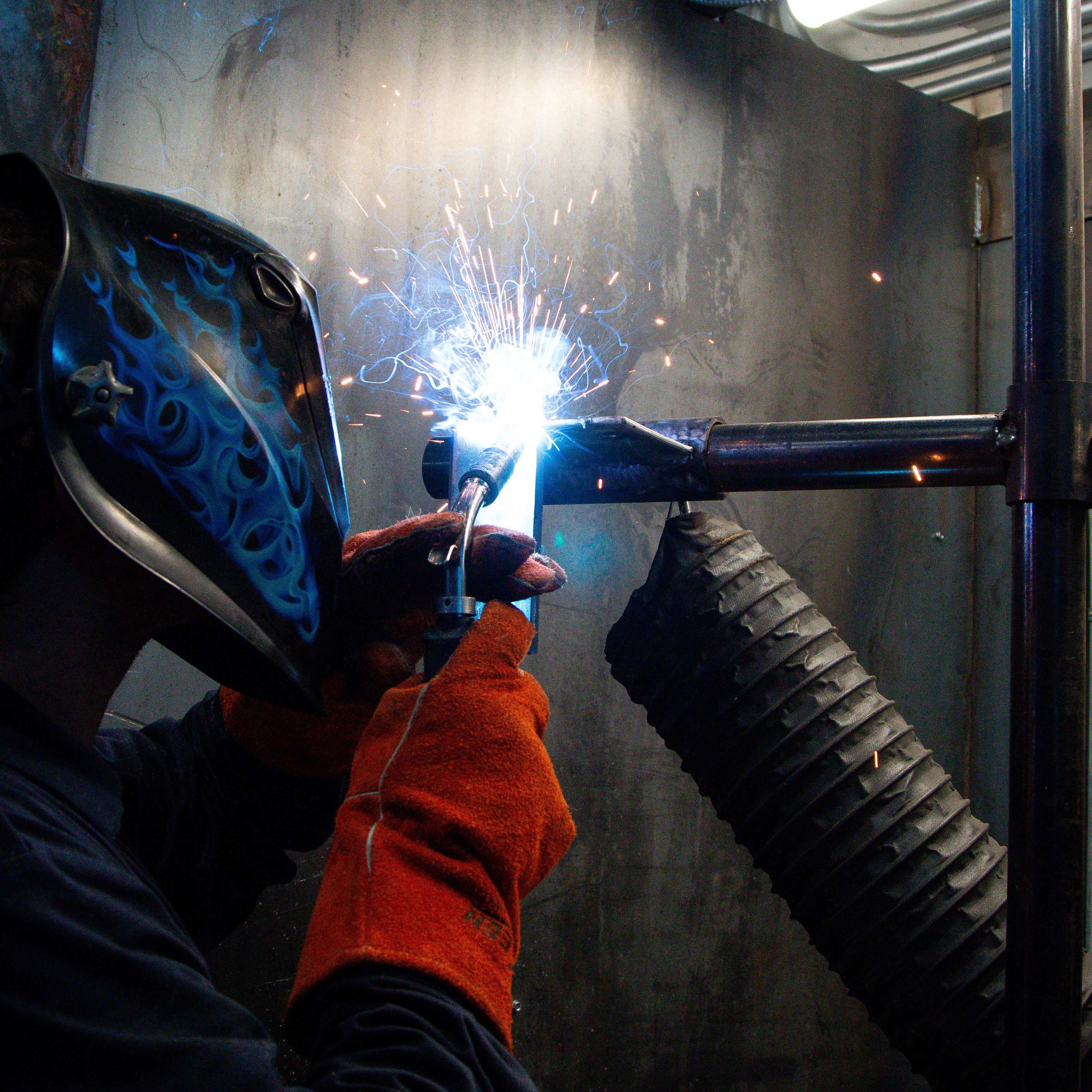Underwater Welding: Everything You Should Know

When most people think of welding, they picture sparks flying in a metal shop or the structural framework of a skyscraper. But welding isn’t confined to land. Underwater welding, a unique and highly skilled profession, takes this craft into one of the most challenging environments on Earth: beneath the surface of the water.
Quick Links
-
What is Underwater Welding?
-
Why is Underwater Welding Important?
-
How Does Underwater Welding Work?
-
How to Become an Underwater Welder
-
Why is Underwater Welding so Dangerous?
-
Why Would Someone Want to Become an Underwater Welder?
What is Underwater Welding?
Underwater welding, also known as hyperbaric welding, is the process of joining metal parts underwater. It combines traditional welding techniques with commercial diving. This field plays a crucial role in industries that rely on submerged infrastructure, such as shipping, oil and gas, energy, and marine construction.
There are two primary types of underwater welding:
- Wet Welding: Performed directly in the water, using waterproof electrodes and specialized equipment. The electric arc is shielded by a gas bubble created at the tip of the electrode, which protects the weld.
- Dry Welding (Habitat Welding): Takes place inside a sealed, dry, pressurized chamber. Even though the chamber is underwater, the welder works in a dry environment, using conventional welding tools.
Both methods are used for tasks like repairing ship hulls, maintaining offshore oil rigs, reinforcing bridge supports, or building underwater pipelines. The type of welding used depends on factors like water depth, the materials being joined, and the level of precision required.
Why is Underwater Welding Important?
While it may sound like a niche skill, underwater welding is essential to the modern world. It supports the functionality and safety of infrastructure we depend on every day, including:
- Offshore oil and gas platforms
- Subsea pipelines and valves
- Commercial shipping fleets
- Naval vessels and defense installations
- Underwater tunnels and bridges
Without underwater welders, many of these systems would be impossible to build or maintain. When failures happen, like cracks in a pipeline or damage to a ship's hull, underwater welders are often the first responders.
Their work not only keeps vital systems operating, but also prevents environmental damage and costly breakdowns. In this way, underwater welders are unsung heroes of global industry.
How Does Underwater Welding Work?
To understand how does underwater welding work, you first need to understand the unique conditions of the underwater environment. Welding underwater poses challenges like increased pressure, limited visibility, varying temperatures, and the ever-present risk of electric shock.
Here's how it typically works:
Wet Welding Process
- Dive Preparation: The diver suits up in a wetsuit or dry suit, checks breathing apparatus, and prepares the welding tools.
- Electrode Selection: A waterproof, flux-coated electrode is chosen to protect the weld pool from water contamination.
- Arc Ignition: The welder strikes an arc to begin fusing the metal. A gas bubble is created at the arc site, allowing the weld to form.
- Welding: The welder performs the necessary joins, working in low-visibility and sometimes high-current conditions.
Dry Welding Process
- Hyperbaric Chamber Setup: A sealed chamber (welding habitat) is placed around the structure to be welded.
- Pressurization: The chamber is filled with gas (typically helium and oxygen) to displace water and allow for dry conditions.
- Conventional Welding: Standard arc welding is performed in this controlled environment, producing higher-quality welds.
Key Differences from Land-Based Welding
- Environment: Land welding takes place in controlled shops or job sites. Underwater welding requires managing buoyancy, water pressure, and visibility.
- Safety Equipment: In addition to welding gear, underwater welders need full diving suits, helmets, and communication systems.
- Fatigue and Endurance: Diving in cold water while doing detailed work demands physical stamina and strong mental focus.

How to Become an Underwater Welder?
The path to becoming an underwater diver welder is not a quick one, but it is structured. You’ll need a combination of formal training, practical experience, and physical readiness. Here’s how to get started:
1. Earn a High School Diploma or GED
This is typically the minimum educational requirement for entering the field. A solid foundation in math, physics, and shop courses can be helpful.
2. Get Certified as a Welder
Before diving underwater, you must be proficient at surface welding. Enroll in a recognized welding certification program where you'll learn essential skills such as:
- Stick (SMAW) welding
- TIG and MIG welding
- Metal preparation and safety protocols
3. Complete Commercial Diving School
Next, you’ll need to attend a commercial diving program. These intensive schools teach you how to:
- Operate diving equipment
- Navigate underwater environments
- Handle emergencies like entanglement or low oxygen
- Use underwater tools, including torches and saws
4. Specialize in Underwater Welding
Once you’re certified in both welding and diving, you’ll train specifically in underwater welding techniques. Programs typically include:
- Underwater welding tanks or simulated environments
- Practice in different water conditions (depth, temperature)
- Procedures for hyperbaric chamber welding
5. Stay Physically and Mentally Fit
Underwater welding is physically demanding. Divers must be in excellent health, pass regular medical exams, and maintain cardiovascular and muscular fitness. Mental resilience is also essential for staying calm and focused under pressure.
Most people can complete all the necessary training within 18 to 24 months. However, gaining hands-on experience and building confidence can take longer depending on the opportunities available.
Why is Underwater Welding so Dangerous?
A frequently asked question is: Why is underwater welding so dangerous? It’s considered one of the riskiest jobs in skilled trades, and for good reason.
Here are the major hazards:
1. Electric Shock
Welding involves high-voltage electricity. Even though welders use insulated tools and strict safety procedures, the risk of shock is elevated in wet environments.
2. Decompression Sickness
Commonly known as “the bends,” this condition occurs when a diver surfaces too quickly. Nitrogen bubbles form in the bloodstream, which can cause severe joint pain, paralysis, or death if not treated immediately.
3. Explosions
Wet welding produces hydrogen and oxygen gases. If these accumulate and ignite, an underwater explosion can occur, endangering the welder and damaging the work site.
4. Drowning and Equipment Failure
Even minor malfunctions in oxygen systems, communication lines, or diving suits can lead to life-threatening situations. Training and constant vigilance are critical.
5. Limited Visibility and Extreme Conditions
Welders often work in pitch-black or murky water, battling cold temperatures and strong currents, all while maintaining precise control of their tools.
Despite these dangers, many still pursue the career. That leads to another common question…
Why Would Someone Want to Become an Underwater Welder?
With so many risks involved, you might wonder: Why would anyone want to become an underwater welder?
Here are a few reasons:
- Adventure and Challenge: It’s a career for those who thrive in extreme environments and enjoy solving problems under pressure.
- High Skill Mastery: Combining two complex disciplines, welding and diving, offers a sense of professional pride and mastery.
- Diverse Work Locations: Welders might find themselves working in tropical waters, Arctic oil rigs, or even military vessels.
- Hands-On, Purpose-Driven Work: Underwater welding is not just technical, it serves critical functions in industries that impact daily life and the environment.
It’s not a path for everyone, but for those who are determined, focused, and passionate, underwater welding offers a unique and fulfilling professional journey.
Underwater welding is one of the most technically challenging and fascinating careers in the skilled trades world. It demands a unique combination of physical strength, technical expertise, and mental focus. From repairing massive oil rigs to reinforcing submerged bridge supports, underwater diver welders keep critical infrastructure safe and operational.
If you're intrigued by careers that combine engineering, diving, and high-stakes work, underwater welding is worth exploring. It’s a profession that calls for grit, discipline, and curiosity, and rewards those who are up for the challenge.
Industry Knowledge
Welcome to the Advanced Technology Institute's Blog, your resource for industry insights and discussions on technologies shaping the future of automotive, heavy vehicle, hvac, welding, and other related career paths.
Explore how ATI's curriculum and hands-on learning opportunities can propel your career in the tech-driven world.


